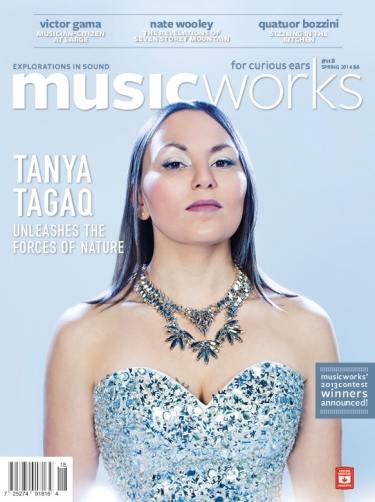
One late November day last year, during a family visit to Amsterdam, I stepped out after dinner and took the tram to Oostenburg, a former harbour hub near the city centre and now being redeveloped as a mixed-use area. After several wrong turns I found the trail-markers (pink birdhouses!) that led me to the canal-facing entrance of the cultural hub Mediamatic’s Fabriek, a cavernous venue that houses a gallery, project space, cafeteria, and . . . aquaponics farm! Can you imagine a better setting for an evening of experimental yodelling? I can’t.
The program included a performance by the renowned free-improvising vocalist Phil Minton, who worked his wide-ranging extended techniques (including yodelling) in a thrilling, at times quite moving, interpretation of John Cage’s Mesostics dedicated to Merce Cunningham. The human voice surrounds me all day, a constant backing track of live and recorded chatter and singing; Minton reminded me that I am only hearing a narrow range of what the human instrument can really do.
Unless, that is, I am listening to throat singer Tanya Tagaq.
Tagaq graces the cover of our Spring 2014 issue, and delivers Tulugak, the fiery opening track of the issue's companion CD (one of our finest to date!). She recorded the song with her trio last summer for her as-yet-untitled album, scheduled for release this year. Veteran Toronto music writer and editor Mary Dickie, in her first Musicworks feature, reveals that Tagaq’s singular artistry has inspired the likes of Kronos Quartet’s David Harrington to take a fresh look the fundamentals of music-making.
Tagaq’s incredible voice was a jumping off point early last fall when I was planning this issue. I was thinking about musical instruments, and people’s expectations of how they should sound and how they should be played, not to mention how they should look.
Last summer at Toronto’s Music Gallery, I caught an intense set by boundary-pushing trumpeter Nate Wooley, whose mezmerizing playing definitely opened my ears. In this issue, contributor Stuart Broomer offers an in-depth look at the six-year evolution of Wooley’s composition Seven Storey Mountain (listen to a live version of SSM IV on the CD) and riffs on some of Wooley’s experiments and how they connect with the extended-technique explorations of both early twentieth-century and contemporary trumpeters.
Some of the instruments in the Spring 2014 issue communicate ideas about the environment and politics through their physical form. In Chicago, artist and woodworker John Preus repurposed discarded materials he scavanged from around the city’s Experimental Sound Studio to make beautiful, functional instruments, a couple of which you can see on our Visions of Sound centrespread. In Angola, composer and instrument maker Victor Gama noticed that many of the nests of the sociable weaver birds were empty after the civil war, and he was inspired to create a symbolic object (the toha, which you can hear on the CD) that evoked the spirit of the birds and asked them to return.
Inside the Spring 2014 issue you’ll also find two very different features exploring the contexts in which chamber music is composed, as well as a glimpse into a future soundworld where intelligent machines compose music.
I asked myself “What is an instrument?” and followed some lines of thought that grew out of that simple question. I didn’t expect answers. In fact, more provocative questions are explored in the pages you will soon peruse:
“What is a note?”
“Why do composers need new instruments?”
And my favourite, “Is it a closely miked air conditioner or an amplified trumpet?”
[ONLINE VERSION OF EDITOR'S NOTE FROM MUSICWORKS #118, POSTED JANUARY 30, 2014.]
Image: Cover of Musicworks, Spring 2014, #118. The issue and its thirteen-track companion CD are mailed to subscribers the first week of February, when the print issue also hits Canadian newsstands. Select content from #118 will be posted on the Musicworks Web hub later in the month.
Photo by: Ivan Otis. Dress by: Fashion Crimes.